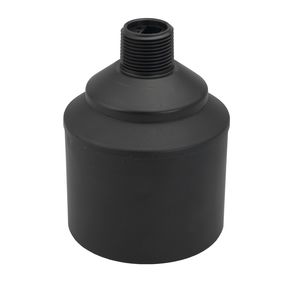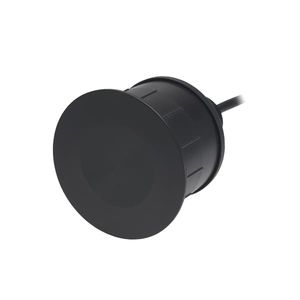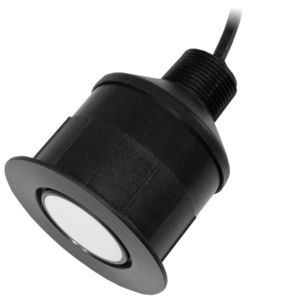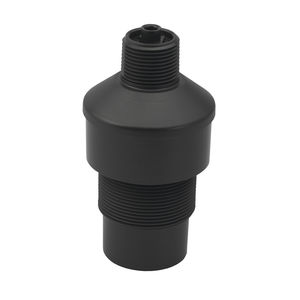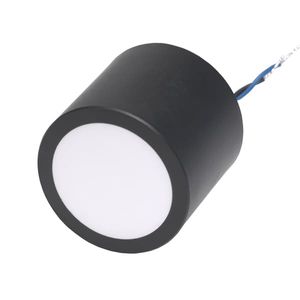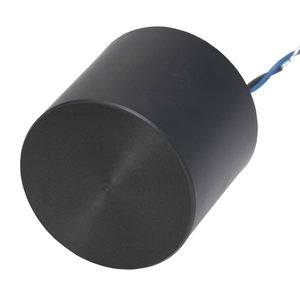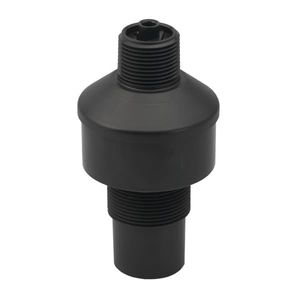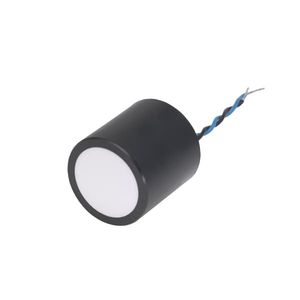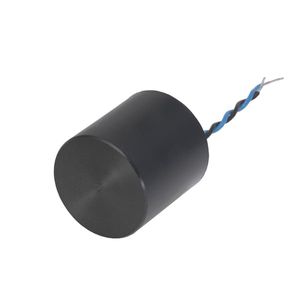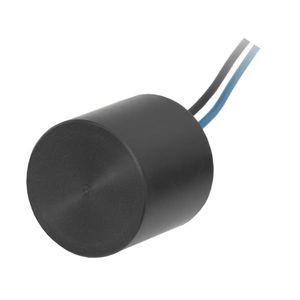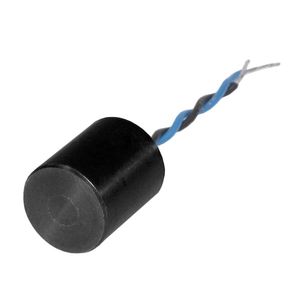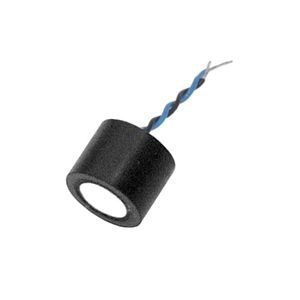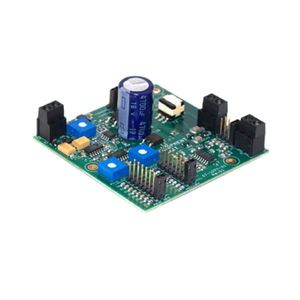
Cylindrical ultrasonic transducer AR50CH Airducer®ultrasonicpiezoelectricacoustic



Add to favorites
Compare this product
Characteristics
- Configuration
- cylindrical
- Technology
- piezoelectric, acoustic, ultrasonic
- Other characteristics
- rugged
- Applications
- proximity, for level measurement, for obstacle detection
- Frequency
50 kHz
- Distance range
Max.: 1,500 cm
(49.2 in)Min.: 25 cm
(9.8 in)
Description
Applications:
- Level measurement
- Open channel flow
- Obstacle avoidance
- Proximity
- Robotics
Features:
- Improved deadband performance as compared to AT50
- Rugged sealed construction
- Cylindrical design allows for installation in various applications
Options:
- 10 KΩ thermistor available for temperature compensation
Specifications:
- Peak Operating Frequency: 50 kHz ±4%
- Minimum Transmit Sensitivity: 106 dB re, 1µPa/V at 1 m at best transmit frequency
- Minimum Receive Sensitivity: -162 dB re 1V/µPa at best receive frequency
- Minimum Parallel Resistance: 450 Ω, ±30%
- Minimum and Maximum Sensing Range*: 25 cm to 15 m
- Typical Sensing Range: 30 cm to 10 m (1 to 33')
- Free Capacitance: 5700 pF ±20% at 1 kHz
- Beamwidth: 12° ±2° at -3 dB
- Maximum Driving Voltage: 1500 Vpp at 2% duty cycle tone burst
- Operating Temperature: -40 to 90°C (-40 to 194°F)
- Weight: 160 g (5.6 oz.)
- Housing: Glass filled polyester
- Acoustic Window: Glass reinforced epoxy
Catalogs
No catalogs are available for this product.
See all of Airmar Technology‘s catalogsExhibitions
Meet this supplier at the following exhibition(s):

Related Searches
- Ultrasonic transducer
- Piezoelectric ultrasonic transducer
- Immersible ultrasonic transducer
- High-frequency ultrasonic transducer
- Cylindrical ultrasonic transducer
- Acoustic ultrasonic transducer
- Ultrasonic ultrasonic transducer
- Rugged ultrasonic transducer
- Flow transducer
- Liquid flow transducer
- Ultrasonic flow transducer
- Analog output flow transducer
*Prices are pre-tax. They exclude delivery charges and customs duties and do not include additional charges for installation or activation options. Prices are indicative only and may vary by country, with changes to the cost of raw materials and exchange rates.




